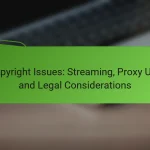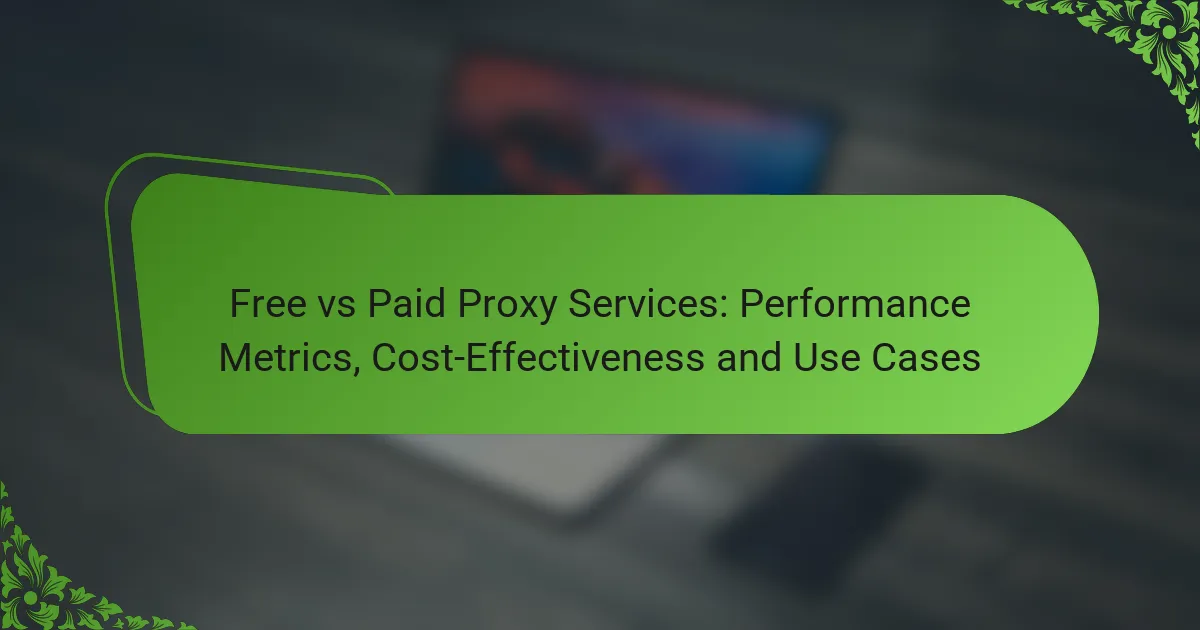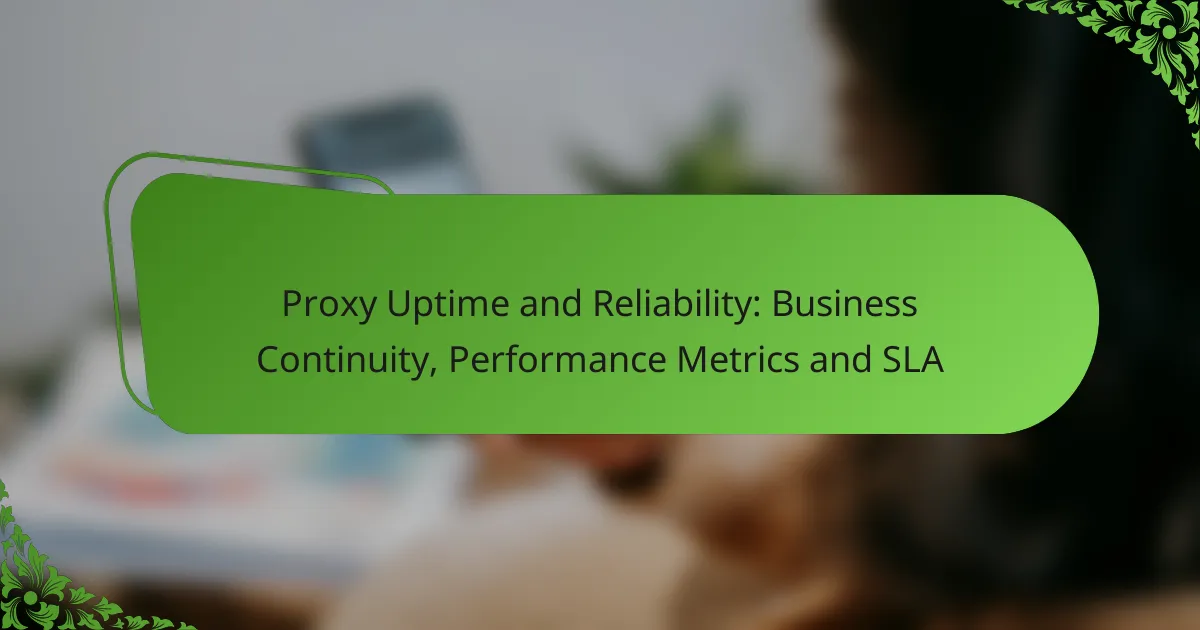When considering proxy services, users often weigh the benefits of free options against the advantages of paid alternatives. Free proxies may attract users with no upfront costs, but they frequently fall short in performance, security, and reliability. In contrast, paid proxies provide dedicated resources, enhanced privacy protections, and superior customer support, making them a more effective choice for serious users seeking consistent performance and security.

What are the performance metrics of free vs paid proxy services?
The performance metrics of free and paid proxy services can vary significantly, impacting speed, reliability, and security. Generally, paid proxies offer better performance due to dedicated resources, while free proxies may compromise on these metrics due to shared usage.
Speed and latency comparison
Paid proxy services typically provide faster speeds and lower latency compared to free options. Free proxies often suffer from congestion as multiple users share the same server, leading to slower response times, which can range from low tens of milliseconds to several hundred milliseconds.
When choosing a proxy, consider testing the speed using tools like speedtest.net. Look for proxies that offer speeds above 10 Mbps for optimal performance in activities like streaming or gaming.
Uptime reliability
Uptime reliability is usually higher with paid proxy services, which often guarantee 99% uptime or more. Free proxies can be less reliable, with frequent downtimes that may disrupt your activities.
To ensure consistent access, opt for a paid service that provides a service level agreement (SLA) outlining their uptime commitments. This can help avoid interruptions during critical tasks.
Bandwidth limitations
Free proxies often impose bandwidth limitations, restricting the amount of data you can transfer within a certain period. This can hinder activities like large downloads or streaming high-definition content.
Paid proxies generally offer unlimited bandwidth, making them suitable for heavy users. Before selecting a proxy, check the bandwidth policies to ensure they align with your usage needs.
Connection stability
Connection stability is typically more robust in paid proxy services, which maintain dedicated servers and resources. Free proxies may experience frequent disconnections due to high user traffic and server overload.
For tasks requiring a stable connection, such as video conferencing or online gaming, a paid proxy is advisable. Look for services that offer a money-back guarantee to test their connection quality.
Data security levels
Paid proxy services often provide enhanced data security features, such as encryption and secure protocols, protecting your information from potential threats. Free proxies may lack these security measures, exposing users to risks like data leaks.
When handling sensitive information, prioritize proxies that offer strong security protocols like HTTPS. Always review the privacy policies to understand how your data is managed and protected.

How do free and paid proxy services compare in cost-effectiveness?
Free proxy services may seem appealing due to zero upfront costs, but they often lack reliability and security compared to paid options. In contrast, while paid proxies require an investment, they typically offer better performance, customer support, and privacy protections, making them more cost-effective in the long run.
Initial costs of free vs paid services
Free proxy services do not charge users, making them attractive for casual users or those testing the waters. However, paid proxy services usually range from a few dollars to several hundred dollars per month, depending on the features and bandwidth offered. This initial investment can deter some users, but it often pays off in terms of quality and reliability.
Long-term value analysis
When considering long-term value, paid proxy services generally provide consistent performance and enhanced security features that free services lack. Users may find that the cost of a paid service is justified by reduced downtime, faster speeds, and better customer support. Over time, the benefits of a paid service can outweigh the initial costs, especially for businesses or heavy users.
Hidden costs of free proxies
Free proxies often come with hidden costs, such as slower speeds, frequent disconnections, and potential data privacy issues. Users may also face risks from malware or data theft, which can lead to significant financial losses. Additionally, the time spent troubleshooting or switching proxies can add up, making free services less economical in practice.
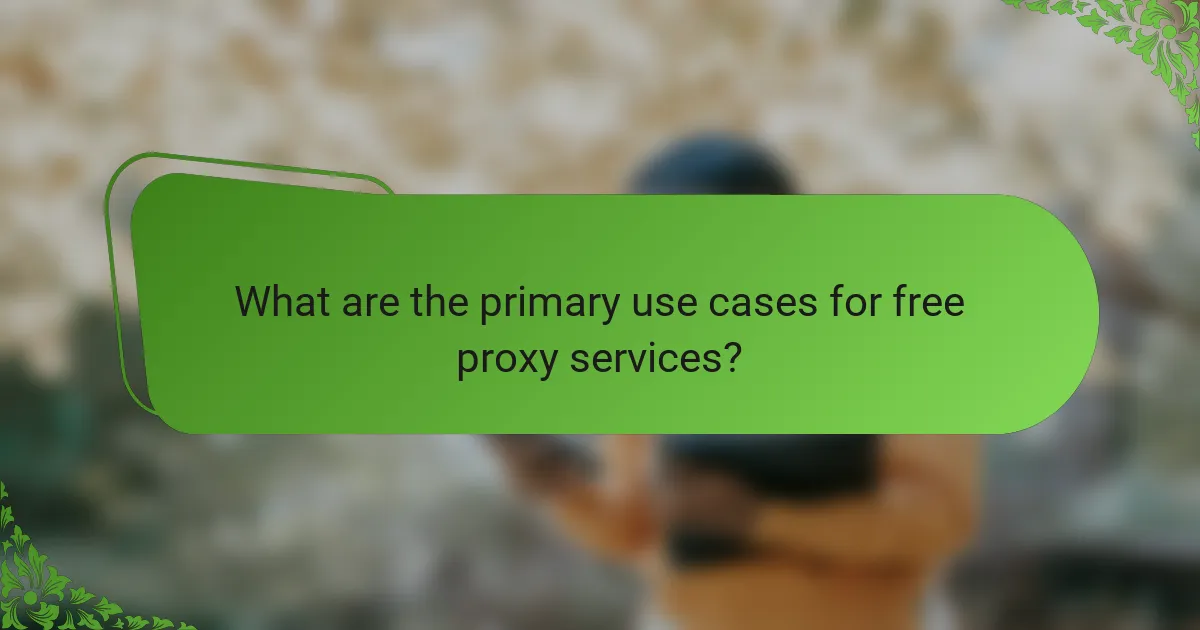
What are the primary use cases for free proxy services?
Free proxy services are commonly used for basic browsing, accessing geo-restricted content, and testing or development purposes. While they can be beneficial, users should be aware of their limitations in terms of speed, security, and reliability.
Basic browsing and anonymity
Free proxy services allow users to browse the internet with a degree of anonymity. By masking the user’s IP address, these proxies can help protect personal information from websites and advertisers.
However, the level of anonymity can vary significantly among free proxies. Users should be cautious, as some may log user data or expose them to security risks.
Accessing geo-restricted content
Many users turn to free proxy services to bypass geographical restrictions on content, such as streaming services or websites that are only available in certain regions. By connecting through a proxy server located in a different country, users can access this content as if they were in that location.
While this can be effective, free proxies often have limited bandwidth and may not support high-quality streaming. Users should consider the potential for slow speeds and buffering when using these services for media consumption.
Testing and development purposes
Developers often utilize free proxy services for testing applications and websites across different geographical locations. This can help ensure that their products function correctly in various environments.
However, relying on free proxies for testing can lead to inconsistent results due to their variable performance and potential downtime. It is advisable to use them for preliminary tests only and consider paid options for more critical development tasks.

What are the primary use cases for paid proxy services?
Paid proxy services are primarily used for tasks that require reliable and secure internet access, such as data scraping, SEO analysis, and high-volume web scraping. These services offer enhanced performance, privacy, and support compared to free alternatives, making them suitable for businesses and professionals.
Business data scraping
Business data scraping involves extracting information from websites for market research, competitive analysis, or lead generation. Paid proxy services provide the necessary speed and anonymity to gather large datasets without being blocked or throttled by target sites.
When using paid proxies for data scraping, consider the proxy type—residential proxies are often preferred for their lower risk of detection. Additionally, ensure the service offers a sufficient number of IP addresses to rotate through, minimizing the chance of being flagged.
SEO monitoring and analysis
SEO monitoring and analysis require consistent access to search engine results and competitor websites. Paid proxies allow users to simulate searches from different locations, providing accurate insights into keyword rankings and website performance.
For effective SEO analysis, choose a proxy service that offers geo-targeting capabilities. This enables you to gather localized data, which is crucial for understanding how search results vary by region. Regularly check for IP reliability to maintain consistent data quality.
High-volume web scraping
High-volume web scraping is essential for businesses that need to collect extensive data quickly, such as e-commerce price monitoring or real-time market analysis. Paid proxies can handle large requests without compromising speed or risking IP bans.
When engaging in high-volume scraping, opt for a service that supports concurrent connections and offers a robust infrastructure. It’s advisable to implement rate limiting to avoid overwhelming target servers, which can lead to temporary bans or throttling.
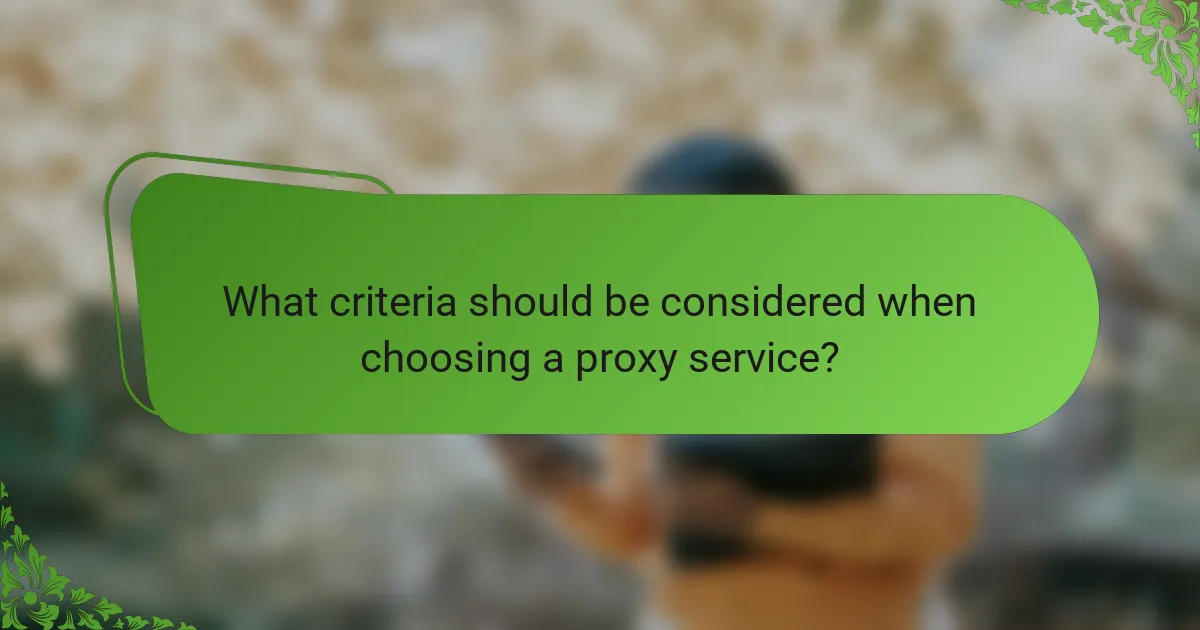
What criteria should be considered when choosing a proxy service?
When selecting a proxy service, consider performance requirements, budget constraints, and specific use cases. These factors will help determine the most suitable option for your needs, balancing speed, cost, and functionality.
Performance requirements
Performance is crucial when choosing a proxy service, as it directly impacts speed, reliability, and user experience. Look for services that offer low latency, high uptime, and fast connection speeds, ideally in the range of low tens of milliseconds for optimal performance.
Additionally, consider the type of proxy you need—HTTP, HTTPS, or SOCKS—as each has different performance characteristics. For instance, HTTPS proxies provide better security but may introduce slight delays compared to HTTP proxies.
Budget constraints
Your budget will significantly influence your choice of proxy service. Free proxies may seem appealing, but they often come with limitations such as slower speeds, unreliable connections, and potential security risks. Paid services typically range from a few dollars to several hundred per month, depending on features and performance.
Evaluate the cost-effectiveness by comparing the price of paid proxies against their performance benefits. A more expensive service may save time and enhance productivity, making it a worthwhile investment for businesses or heavy users.

